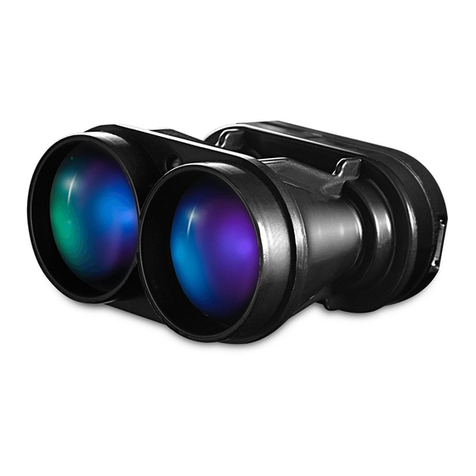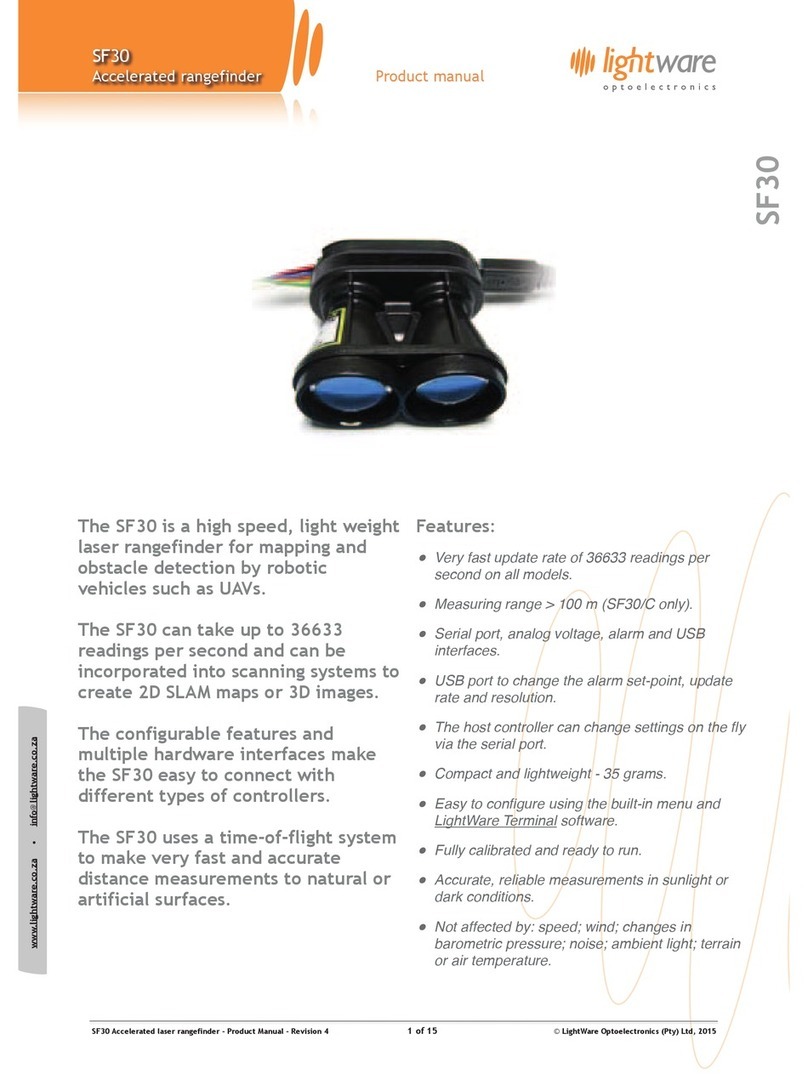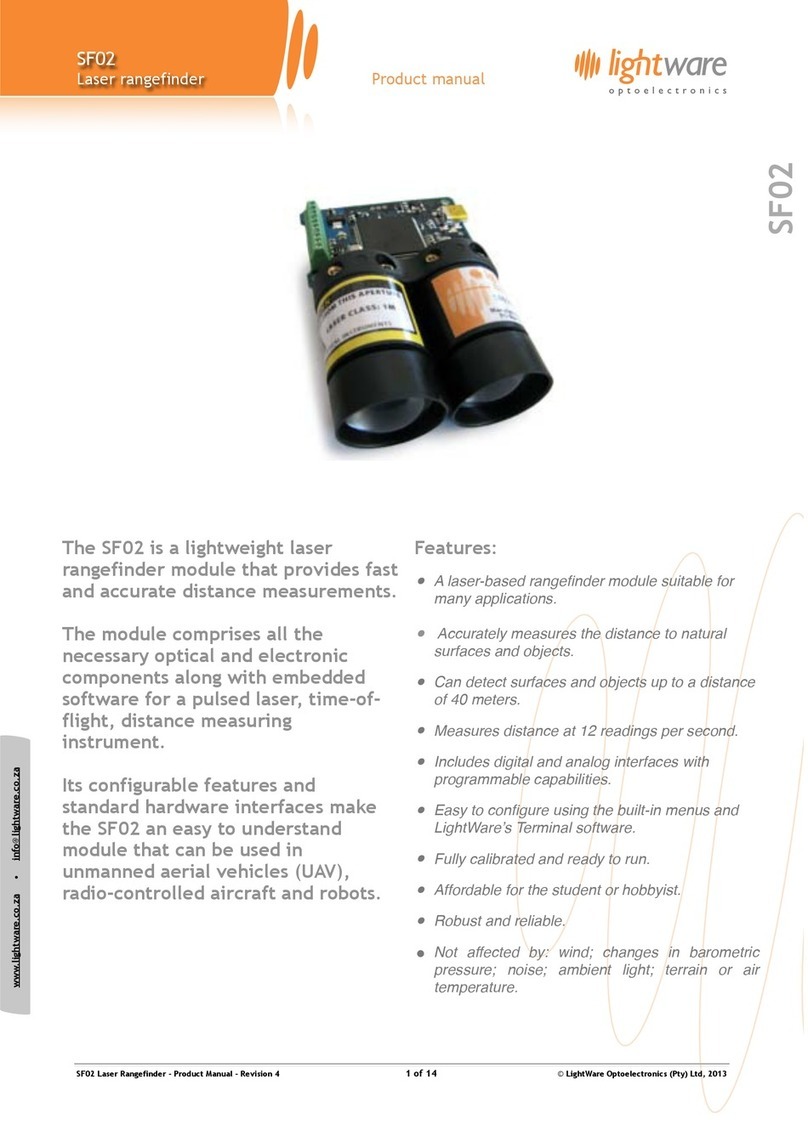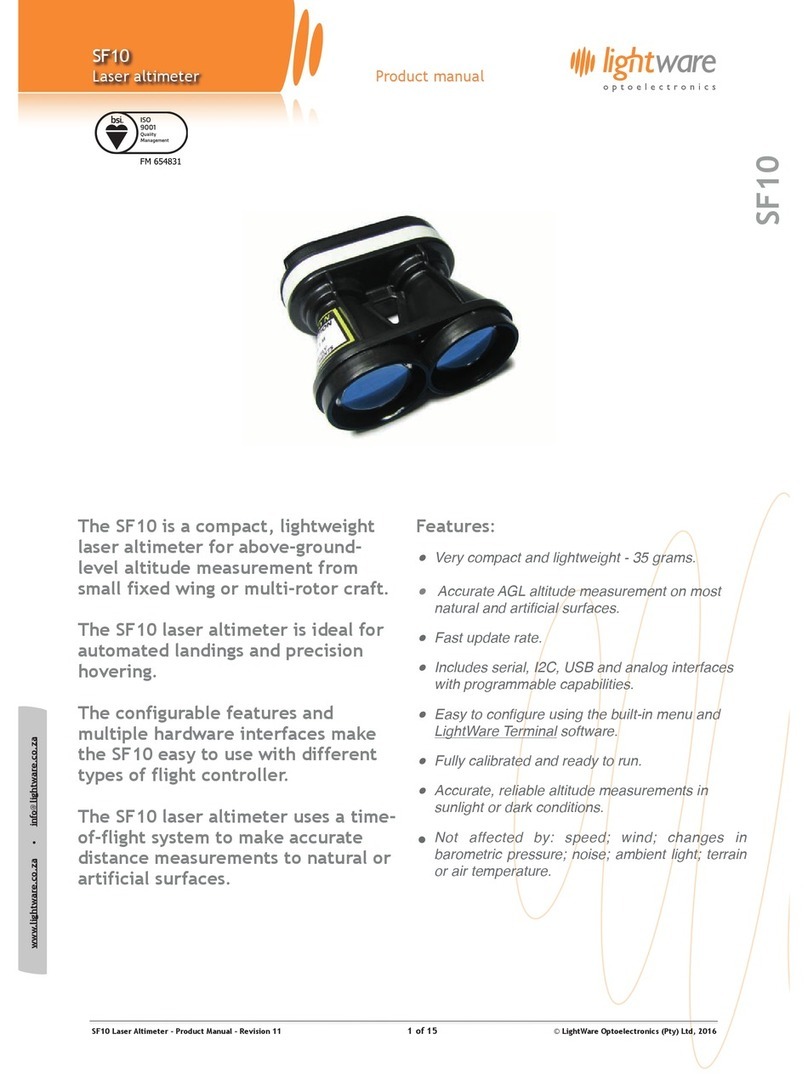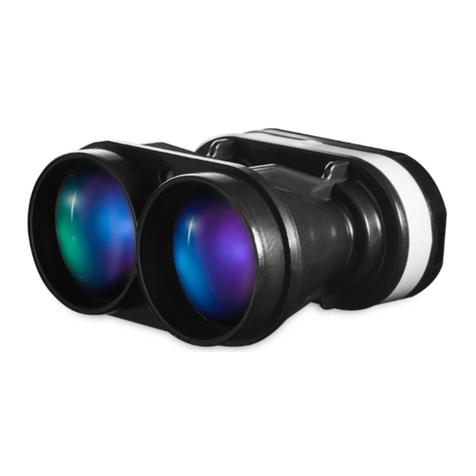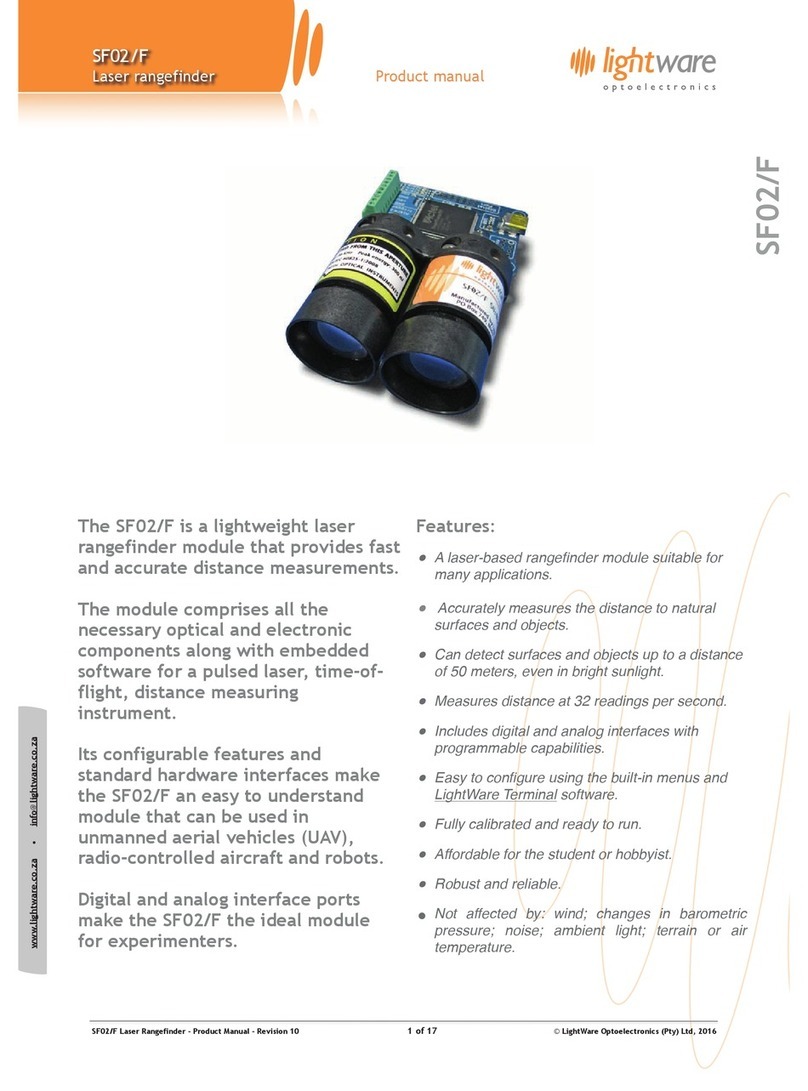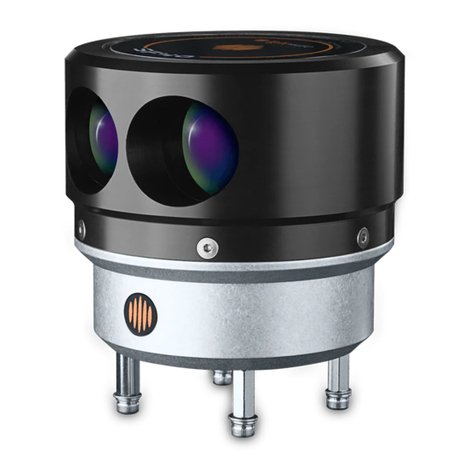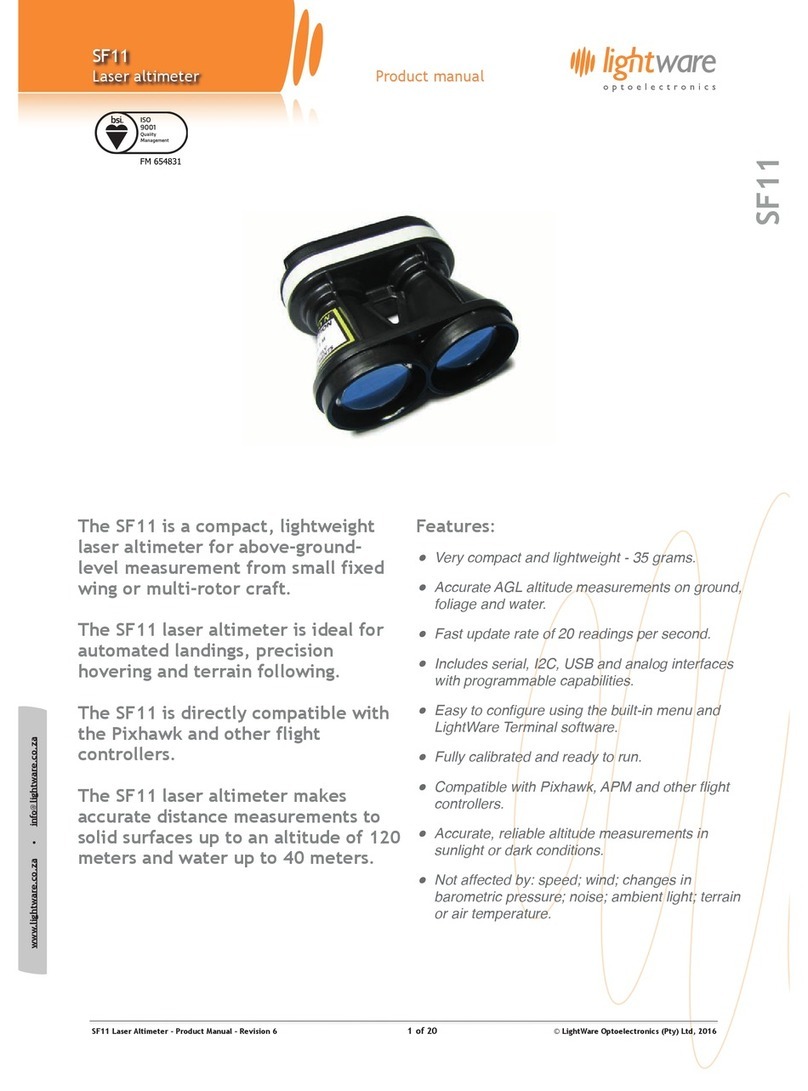5. Communicating with the USB port
The SF30 has a micro-B USB port that can be used to communicate with LightWare Terminal software on a PC. This connection also
gives power to the unit providing a quick way to test and configure the SF30. The LightWare Terminal software will automatically
detect the USB port that is connected to the SF30 and communications can be established by clicking on the “Connect” icon. If more
than one compatible device is present, click the “Laser” icon to select which USB port should be active.
Figure 5 :: USB communications
Once communication has been established, settings can be changed by pressing the <SPACE> key to access the menu and then
selecting the menu item that needs changing. Pressing the <SPACE> key again restarts the measuring process. The results outputted
during measuring include the distance, the analog voltage and the alarm status. More details of the menu items are discussed in the
sections that follow.
If you want to use a different serial emulation program then the USB serial protocol should be set to 115200 baud with 8 data bits, 1
stop bit and no parity or handshaking (8N1). All communications are in standard ASCII format.
6. System configuration
There are two settings that provide the overall system configuration for the SF30 and these affect the behaviour of each of the
interfaces.
The “1: Output type” selection directs the results to one of the two available data ports, either the serial port or the USB port. Only
one of these ports can be active at a time.
USB option: When connected to a PC with the USB cable, it is convenient to have the results displaying in the Terminal window.
Results are available in the following formats: distance in m; distance plus signal strength or analog voltage. The results from the
analog port are displayed continuously while the SF30 is running.
Serial option: When connected to a host controller the results should be directed to the serial port. The enu system is still available
using the USB port but readings (distance in m or speed in m/s) will not be displayed when the SF30 is running.
The “2: Exposure time” selection affects the way that distance readings are taken and presented to the output ports.
Exposure time controls how long a single measurement gathers data for its result. The SF30 always fires 20010 laser shots per
second, and it will use as many of these shots per result as the exposure time allows. For example, if the exposure time is set to ~50
microseconds then there is only enough time to use a single shot per result. This can be desired when your target is fast moving and
you do not want to risk 'blurring' the result by hitting other targets during the same exposure time. Likewise, by increasing the
exposure time you increase the amount of information which can be used to improve accuracy at range, and filter out noisy results.
